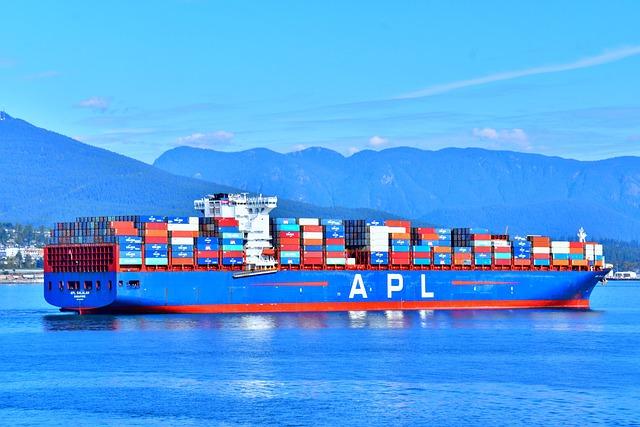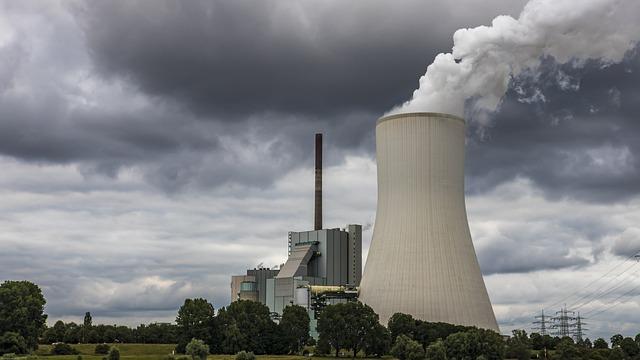Stalemate within the peace Negotiations Between Armenia and Azerbaijan
The ongoing peace negotiations between Armenia and Azerbaijan have reached a notable deadlock, fueled by deep-rooted historic grievances and territorial disputes.Key points blocking progress embrace:
Ethnic tensions: Longstanding conflicts between ethnic Armenians and Azerbaijanis have soured relations.Territorial disputes: The disputed nagorno-Karabakh area stays a contentious focal level.Belief deficits: Distrust between each nations complicates dialogue and cooperation efforts.
Current makes an attempt to revive dialogue have been stymied by provocative actions from each side, which have escalated navy posturing. The worldwide group stays engaged, but the prospects for a breakthrough appear bleak. A proposed framework for peace has been met with skepticism, with each nations demanding stringent ensures on safety and sovereignty. Important to transferring ahead will probably be:
Worldwide mediation: An unbiased third get together may facilitate dialogue.confidence-building measures: Initiatives aimed toward lowering hostilities may probably be important for fostering goodwill.Public engagement: Involving residents in peace processes might assist construct a extra sturdy basis for lasting peace.

Historic Context of the Armenia-Azerbaijan Battle
The roots of the Armenia-Azerbaijan battle stretch again to the early twentieth century, as tensions between the 2 nations have been exacerbated by historic grievances and shifting territorial claims. Following the collapse of the Ottoman Empire and the rise of the Soviet Union, each nations discovered themselves weaved into a posh internet of political affiliations, continuously sufficient influenced by exterior powers. The area of Nagorno-Karabakh, primarily populated by ethnic Armenians, grew to become a point of interest of battle through the Soviet period. Within the late Eighties, because the Soviet Union weakened, nationalism surged, and the demand for Nagorno-Karabakh to be part of Armenia led to violent clashes in what would turn into the First Nagorno-karabakh Conflict (1988-1994). Key components contributing to the battle embrace:
Ethnic Nationalism: Deep-rooted ethnic identities play a pivotal function in fueling hostilities.Soviet Legacy: Arbitrary borders drawn through the Soviet period have sophisticated modern-day territorial disputes.Geopolitical Pursuits: Regional and world powers ofen intervene, influencing the result of negotiations.
Within the years following the ceasefire, the established order has been marked by sporadic skirmishes and a fragile peace that seldom addresses the underlying points. The Second Nagorno-Karabakh Conflict in 2020, which lasted for 44 days, resulted in important territorial losses for Armenia and a reshaping of the geopolitical panorama in the South Caucasus. Regardless of worldwide efforts led by the minsk Group co-chairs and different stakeholders, sustainable peace has remained elusive, largely on account of mutual mistrust and narratives that glorify historic grievances. The present stalemate persists as each nations grapple with their war-torn histories, aspirations for sovereignty, and the complexities of worldwide diplomacy, which have did not present a viable path towards reconciliation.Impeding components within the peace course of embrace:
Lack of Belief: Historic animosities hinder the potential for dialogue.Home Politics: Leaders continuously sufficient exploit nationalist sentiments for political acquire.Disputed Territorial Claims: Every facet’s insistence on territorial integrity complicates negotiations.

Present Impediments to Attaining Peace
The ongoing negotiation efforts between Armenia and Azerbaijan are overshadowed by a posh internet of historic grievances and territorial disputes that hinder any actual progress towards peace. Key components embrace:
Longstanding Hostilities: Deep-rooted animosities from the Nagorno-Karabakh battle proceed to gas mistrust between the 2 nations.Geopolitical Influences: Involvement from regional and world powers complicates the scenario, with nations having vested pursuits that will not align with peace efforts.Inside Political pressures: Each governments face home challenges, the place peace initiatives might be perceived as concessions resulting in political backlash.
Furthermore, the dearth of a cohesive framework for dialogue exacerbates the challenges at hand. Insufficient communication channels stop each side from addressing key points successfully. The desk beneath highlights a few of these crucial components:
FactorImpact on Peace ProcessTerritorial ClaimsProlonged disputes lead to navy escalations.Worldwide MediationDifficulties in discovering impartial floor for negotiations.Cultural DifferencesMisunderstandings and biases create obstacles in reconciliation.

Worldwide responses and Their Influence on the Scenario
In latest months, the worldwide group’s involvement in the stalemate surrounding the Armenia-Azerbaijan peace course of has intensified, yielding blended outcomes. Varied nations and organizations have made concerted efforts to mediate and facilitate dialogue, but the complexity of historic grievances and territorial disputes continues to impede progress. Key gamers embrace:
The united States: Actively advocating for a diplomatic decision, providing to host negotiations aimed toward de-escalating tensions.The european Union: Offering monetary assist for reconstruction in affected areas whereas urging each side to decide to peace talks.Russia: Positioning itself as a conventional ally of armenia, but additionally in search of to keep up a stability in its relations with Azerbaijan.
The impression of those worldwide responses may be seen in each navy and humanitarian contexts. Though diplomatic negotiations have produced momentary ceasefires, breaches proceed to happen, underscoring the volatility of the scenario. Furthermore, humanitarian assist has been crucial in addressing the wants of displaced populations, but funding gaps persist. Notably, a latest desk illustrates the proportion of assist distributed by varied organizations:
InstitutionAid Distributed ($ tens of millions)Focus AreaUNHCR50Refugee assistanceRed Cross30Emergency reliefWorld Meals Program25Food distribution
This enhance in worldwide engagement displays a rising recognition that sustainable peace requires not solely political negotiation but additionally sturdy assist for these affected by battle, highlighting the necessity for a holistic method to ending the stalemate.

Suggestions for a Sustainable Path Ahead
To navigate the continued stalemate within the Armenia-Azerbaijan peace course of, a multifaceted method is important.stakeholders shoudl prioritize diplomatic engagement, emphasizing dialogue over confrontation. It’s important to set up a impartial mediation platform that entails each regional powers and worldwide organizations to facilitate discussions. This platform can function an area for constructive dialogue, fostering an habitat the place each events really feel safe in expressing their issues and aspirations. Moreover, confidence-building measures similar to joint cultural tasks and financial initiatives can pave the way in which for elevated cooperation and understanding.
Furthermore, addressing the humanitarian wants of affected populations ought to be a cornerstone of any sustainable peace technique. Growing collaborative packages centered on displacement decision and group rebuilding can assist alleviate the grievances that always gas battle. Initiatives might embrace:
Cross-border instructional exchanges to promote understanding amongst youthful generations.Joint financial ventures that profit each communities, fostering interdependence.Shared environmental tasks addressing ecological issues, highlighting frequent pursuits.
These efforts can create a basis for lasting peace that prioritizes the welfare of all residents within the area, transferring past the historic grievances that complicate the present scenario.

The Position of Regional Powers within the Peace Course of
The involvement of regional powers in the continued peace course of between Armenia and Azerbaijan is essential for any hope of attaining a long-lasting decision.International locations such as Turkey and Iran, on account of their geographical proximity and historic ties, have important stakes within the outcomes of this battle. Their engagement can result in both a constructive affect, pushing for dialogue and compromise, or exacerbate current tensions. The potential for mediation by these nations presents alternatives, however it might probably additionally complicate the peace efforts if nationwide pursuits conflict. Key roles embrace:
facilitating negotiations: Regional powers can act as impartial facilitators to bridge the hole between the conflicting events.Guaranteeing safety: Their involvement can present the needed safety assurances that might encourage each side to interact within the peace talks sincerely.Financial incentives: They’ll provide financial help or incentives that might present a mutual profit and encourage cooperation.
Although, the dangers of regional powers’ involvement can’t be neglected. Political dynamics continuously sufficient result in energy struggles, with varied nations in search of to assert their affect over the south Caucasus. A latest pattern has noticed a polarization the place exterior actors might assist one facet over the opposite, probably prolonging hostilities. The effectiveness of their participation continuously sufficient hinges on their potential to stability assist whereas fostering an surroundings conducive to real dialogue. For occasion, the present positions of Turkey and Iran relating to the peace negotiations present contrasting approaches:
CountryPositionTurkeyStrongly helps Azerbaijan, specializing in territorial integrity.IranAdvocates for neutrality and territorial respect for each events.
To Wrap It Up
the enduring stalemate in the Armenia-Azerbaijan peace course of highlights the complicated interaction of historic grievances,geopolitical pursuits,and nationwide identities that proceed to form the area.As each side stay entrenched of their positions, the prospects for a significant decision seem unsure. Worldwide mediators and regional stakeholders should intensify their efforts to facilitate dialogue and foster understanding, as the necessity for a sustainable peace is extra urgent than ever. The world watches intently as this crucial problem unfolds, conscious that the repercussions lengthen far past the borders of Armenia and Azerbaijan. Continued engagement, each diplomatic and grassroots, will probably be important in breaking the cycle of battle and paving the manner for a harmonious future within the South Caucasus.
Source link : https://europ.info/2025/02/25/azerbaijan-2/stalemate-persists-in-the-armenia-azerbaijan-peace-process-aze-media/
Creator : Olivia Williams
Publish date : 2025-02-25 23:27:00
Copyright for syndicated content material belongs to the linked Source.



